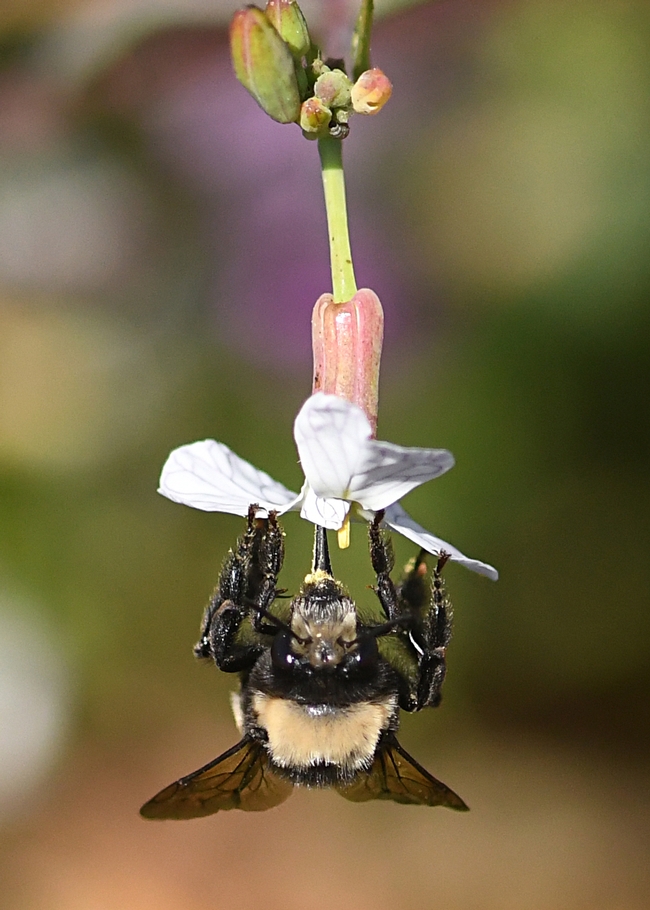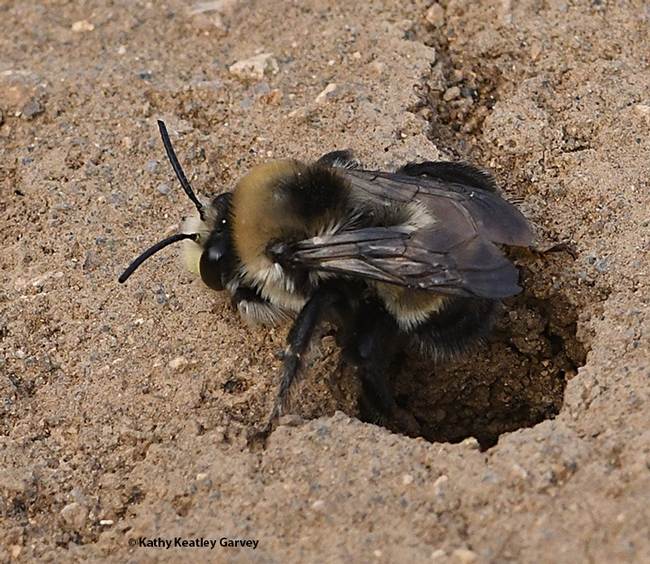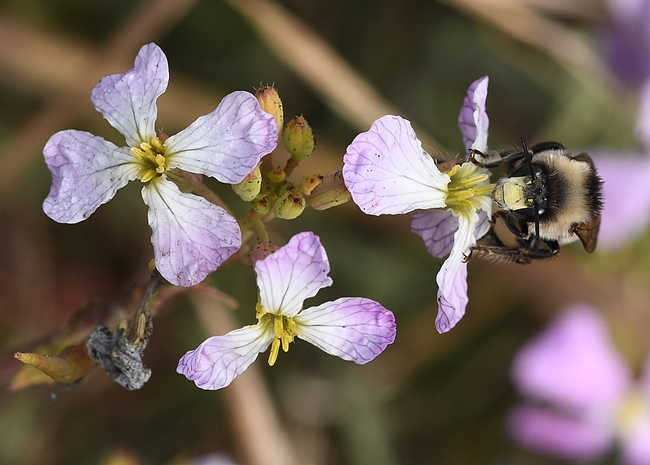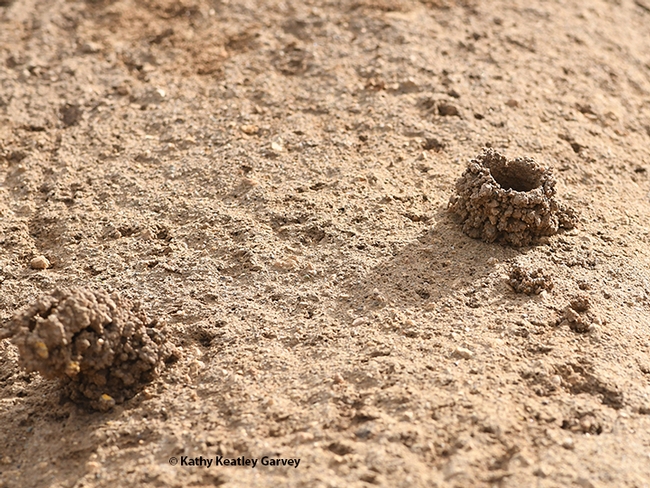 If you vacation at Bodega Bay--sometimes called "Blow-dega" due to whipping winds--you've probably driven to Bodega Head to watch for whales, see the waves crash against the cliffs, spot seabirds nesting in the rocks, or to observe such fauna as deer and red-tailed hawks on the horizon.
If you vacation at Bodega Bay--sometimes called "Blow-dega" due to whipping winds--you've probably driven to Bodega Head to watch for whales, see the waves crash against the cliffs, spot seabirds nesting in the rocks, or to observe such fauna as deer and red-tailed hawks on the horizon.
But have you ever seen the digger bees?
They're out there.
The sand cliffs are the home of the digger bee, a bumble bee mimic known as Anthophora bomboides stanfordiana. This bee builds turrets in the sand cliffs.
Last Thursday we watched several digger bees warm their flight muscles, take flight, and forage on the lupine, wild radish, and seaside daisy. Then we saw the females zipping in and out of their turrets: their cozy castles in the sand.
As the late Robbin Thorp, a global authority on bumble bees and a UC Davis distinguished emeritus professor of entomology, told us several years ago: "The species name indicates that it is a bumble bee mimic. These bees need a source of fresh water nearby. Females suck up water, regurgitate it on the sandstone bank surface, then dig away at the soft mud. They use some of the mud to build entrance turrets, presumably to help them locate their nests within the aggregation of nests."
"The female," Thorp said, "sucks up fresh water from nearby, stores it in her crop (like honey bees store nectar) for transport to the nest. She regurgitates it on the sandstone, and excavates the moistened soil. She carries out the mud and makes the entrance turret with it."
As part of a National Science Foundation grant, community ecologist Rachel Vannette, assistant professor, UC Davis Department of Entomology and Nematology, is teaming with other colleagues, including pollination ecologist Stephen Buchmann, to research these digger bees and their nests.
It's a big beautiful bee world out there.
Attached Images:

Close-up of a digger bee, Anthophora bomboides stanfordiana, on a sand cliff at Bodega Head, Sonoma County. (Photo by Kathy Keatley Garvey)

A digger bee nectaring on a wild radish at Bodega Head. (Photo by Kathy Keatley Garvey)

The female digger bee, Anthophora bomboides stanfordiana, makes these turrets on the sand cliffs at Bodega Head. (Photo by Kathy Keatley Garvey)